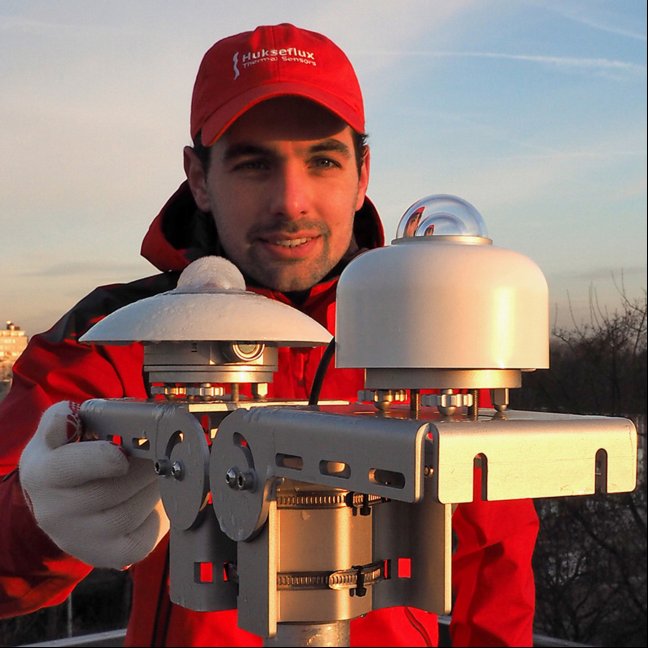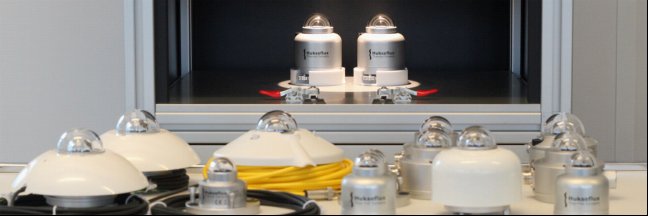PV monitoring and meteorological industries prepare for revised pyranometer standard ISO 9060:2018
Do your instruments comply? Hukseflux models SR20 and SR30 do.
The ISO 9060 pyranometer classification standard’s “final draft” has been submitted to ISO in April 2018. This note by Hukseflux Thermal Sensors reports positions on which there is confirmed consensus in the standard working group; it also reports an update of the state of development. For sources, see the last page of this note (PDF). Contents reflect the “personal opinion” at Hukseflux concerning this upcoming standard. The proposed revision will have stricter requirements than the prior 1990 version. There is consensus that performance verification reports for temperature dependence and directional response must now be included with every individual instrument of the highest accuracy class. The IEC 61724-1 PV system performance monitoring standard requires compliance with the latest ISO 9060 version, so that requirements for the highest accuracy, Class A, PV monitoring systems also change.
Good news for Hukseflux users:
- installed base, present supply and future supply of Hukseflux SR20 and SR30, already comply with the new version of the ISO 9060 standard
- SR30 also complies with IEC 61724-1 Class A - PV system monitoring system requirements as is, while SR20 complies with Class A when used with the optional Hukseflux VU01 ventilation unit.
Hukseflux’ suggestion for all pyranometer users in PV monitoring and meteorological industries:
- prepare to specify “Spectrally Flat Class A pyranometer” instead of “Secondary Standard”
Introduction
The 1990 edition of ISO 9060: Solar energy – Specification and classification of instruments for measuring hemispherical solar and direct solar irradiance –, is up for revision. The new 2018 version of the standard will be slightly different from the 1990 version. In fact, the standard is now in the FDIS “Final Draft” stage; only minor revisions are still permitted. Hukseflux believes the time is right to inform the industry of the key changes to the standard.
The new version of ISO 9060 includes:
- 3 instrument accuracy classes, A, B and C
- a special extension of every class “Spectrally Flat”, which is recommended for Plane of Array (POA), albedo, and reflected solar measurements
- a new definition for spectral error (previously known as spectral selectivity)
New requirements are clarified for Class A (old name: Secondary Standard) pyranometers only:
- individual testing of temperature response
- individual testing of directional response
Many PV monitoring systems comply with IEC61724-1: Photovoltaic system performance monitoring – Guidelines for measurement, data exchange and analysis. This IEC standard is linked to ISO 9060. For details see the next paragraphs.
Getting prepared
Ask yourself:
- do I claim compliance with ISO 9060 “Secondary Standard”? If so, are/were the instruments supplied with temperature and directional response test reports on an individual sensor basis? Under ISO 9060:2018, “Class A” instruments must be supplied with said test reports.
- for PV monitoring: do I claim compliance with IEC 61724-1: Photovoltaic system performance monitoring? If claiming to offer IEC Class A monitoring, see explanation below.
- do I have old instruments on stock? You may consider an upgrade, see explanation below.
Additional preparations:
- change product specifications or requirements: refer to “Spectrally Flat Class A, B or C pyranometers” and ISO 9060:2018
- include “temperature and directional response test reports” to the specification of Class A instruments
- change the “spectral selectivity” specification to “spectral error”
Why you need a “Spectrally Flat” pyranometer in PV monitoring and in meteorology
For PV and Meteorological industries, working from the WMO manual and from IEC 61724-1, specifying “Spectrally Flat” instruments ensures continuity of performance. In more detail: the new ISO 9060:2018 specifies the spectral error using a clear sky spectrum and horizontally installed instruments. A special “Spectrally Flat” category is defined for instruments installed non-horizontal, potentially measuring a different spectrum, using the old (stricter) WMO, IEC and ISO definition of “spectral selectivity”. The standard specifically states use of “Spectrally Flat” instruments for:
- reflected solar radiation
- albedo
The same “Spectrally Flat” is essential for:
- Plane of Array (including reflected) irradiance
- diffuse irradiance (diffusometers)
More about compliance of pyranometers with the new IEC classification
A separate memo offers comments on consequences of the new IEC 61724-1 standard concerning the selection of pyranometers.
What does IEC 61724-1 require?
This IEC 61724-1 standard, in chapter 2, requires compliance with the latest available version of the ISO 9060 standard.
This means users claiming compliance with IEC 61724-1 “Class A monitoring systems” must take special care. In case you are using a ventilated Hukseflux SR20, or the latest SR30 model, you already comply. In the event another ventilated pyranometer is used, consult Tables 1 and 2 in this document or contact the manufacturer.
|
ISO 9060:2018 |
ISO 9060:2018 |
ISO 9060:2018 |
ISO 9060:2018 |
|---|---|---|---|
| Accuracy |
high |
high | medium |
| Purpose/application |
utility scale PV systems, Global (GHI), Plane of Array (POA) & albedo |
utility scale PV systems, Global (GHI) only |
large commercial PV systems |
|
Individual test of temperature response |
required |
required |
not required |
|
Individual test of directional response |
required |
required |
not required |
|
Examples of ISO 9060:2018 complying instruments |
SR30, SR20 all ISO 9060:1990 secondary standard pyranometers with directional- and temperature test reports |
SR30, SR20 all ISO 9060:1990 secondary standard pyranometers with directional- and temperature test reports |
SR15 all ISO 9060:1990 first class pyranometers |
|
|
IEC 61724 CLASS A MONITORING SYSTEM | IEC 61724 CLASS A MONITORING SYSTEM | IEC 61724 CLASS B MONITORING SYSTEM |
|---|---|---|---|
|
ISO 9060:2018 compliance required? |
yes, chapter 2 demands compliance with the latest version of ISO 9060 |
yes, chapter 2 demands compliance with the latest version of ISO 9060 |
yes, chapter 2 demands compliance with the latest version of ISO 9060 |
| Instrument requirements in ISO 9060:2018 vocabulary |
ISO 9060 “Spectrally Flat Class A” with heater and ventilation |
ISO 9060 “Class A” is insufficient: not suitable for Plane-of-Array (POA) |
ISO 9060 “Spectrally Flat Class B” with heater |
| Examples of IEC 61724-1+ ISO 9060: 2018 complying instruments |
SR30 all ISO 9060:1990 secondary standard pyranometers with directional- and temperature test reports equipped with ventilation and heating |
SR30, SR20-T1 and T2, SR15 all ISO 9060:1990 first class pyranometers equipped with heating |
| BRAND | MODEL | ISO 9060:2018 SPECTRALLY FLAT CLASS A (SECONDARY STANDARD) | IEC 61724-1 COMPLIANCE |
|---|---|---|---|
| Hukseflux | SR30 | yes | class A |
| Hukseflux | SR20 with VU01 ventilation unit | yes | class A |
| Hukseflux | SR20-T1, SR20 –T2 | yes | class B |
| All brands | ISO 9060:1990 secondary standard pyranometers with directional- and temperature test reports equipped with ventilation and heating | yes | class A |
Read the full article here:
How to prepare for the revised ISO 9060:2018 pyranometer classification standard (PDF)









